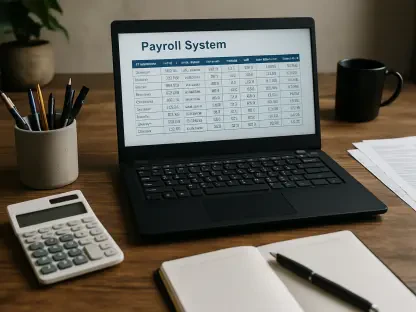In a significant strategic pivot, Stellantis NV, the parent company behind prominent automotive brands such as Jeep and Fiat, is ending its work-from-home policy instituted during the COVID-19 pandemic. This shift comes in the wake of a profit warning and subsequent management changes. The decision marks a crucial adjustment in how the company plans to tackle ongoing challenges.
Shifting Back to In-Office Work
The End of Remote Work
Stellantis has decided that employees need to be in the office at least three days a week. This move is aimed at fostering collaboration and addressing critical issues that demand heightened attention. According to CEO Carlos Tavares, the change is expected to align the company’s operations more closely with the current business requirements. Management believes that in-office work is essential for projects that require intensive focus and quicker decision-making processes.
During the pandemic, remote work was seen as a cost-cutting measure. The company downsized office spaces and divested real estate assets to adapt to the new model. While this may have reduced expenses, it came with its own set of challenges. Labor unions criticized the extensive push for remote work, arguing that it hindered productivity and affected employee morale negatively. The unions contended that the lack of in-person interaction was detrimental to teamwork and collaboration, core elements in the automotive industry.
Historical Background
During the height of the pandemic, Carlos Tavares was a strong proponent of remote work, primarily to reduce costs. The company’s aggressive strategy involved cutting down on office expenses and selling off real estate to embrace a remote-first model. However, this approach faced resistance. Labor unions were quite vocal in their opposition, arguing that the company was pushing remote work excessively, which was not beneficial for employees or the company as a whole.
The criticisms from unions were not without merit. They argued that excessive remote work led to a disconnect among team members, hampering productivity and workplace morale. Remote work was initially embraced as a necessary reaction to the pandemic, but over time, it became apparent that the model was not sustainable in the long term for all types of work. The company’s need to foster a collaborative and cohesive working environment necessitated a reevaluation of its remote work policy. The shift back to in-office work aims to address these concerns and better align the company’s practices with its operational goals.
Management and Structural Changes
Impact of Profit Warnings
A recent profit warning revealed systemic issues such as poor sales, quality problems, and delays in launching new models. These factors prompted swift action from the top brass. CEO Carlos Tavares emphasized that rectifying these issues, especially in the U.S. market, is a top priority. This led to a series of management changes, including the departure of the finance chief. The company has had to take a hard look at its operational inefficiencies and address them swiftly to regain market confidence and operational stability.
As a result, the management shakeup was inevitable. The new leadership team is expected to drive changes aimed at reversing recent setbacks and aligning efforts more effectively across the company. Stellantis’ decision to end its remote work policy is part of a broader strategic initiative to resolve underlying issues affecting performance. Employees are now required to spend more time in the office to enhance collaboration and focus on solving pressing operational challenges. This shift is seen as essential for projects that demand greater interaction and immediate decision-making capabilities.
Leadership and Accountability
In a bid to stabilize the situation, Xavier Chereau, the human resources chief, has pointed out the importance of in-office work for projects that require intensive focus. The new leadership team is expected to drive changes aimed at reversing recent setbacks and aligning efforts more effectively across the company. An emphasis has been placed on holding the new management accountable for delivering results that reflect positively on the company’s bottom line and overall market position.
Carlos Tavares’ leadership approach includes instilling a sense of accountability among top executives, underlining the importance of operational efficiency and strategic foresight. Following the profit warning, the expectation is that the new leadership team will bring about a more cohesive organizational structure. With tighter oversight and a renewed focus on collaboration, Stellantis aims to address the systemic issues that have plagued it in recent months. The emphasis on in-office work is seen as a critical element in this overall strategy to improve communication, morale, and ultimately, corporate performance.
Employee Reskilling and Morale
Focus on Electric Vehicles
Despite the push for job cuts, especially in high-cost countries like France, Stellantis is deeply invested in reskilling its workforce. The transition to electric vehicles (EVs) necessitates a versatile and well-trained workforce. The company has earmarked €144 million ($157 million) this year alone for reskilling efforts, ensuring employees are well-prepared for this evolution. The auto industry is rapidly moving towards EVs, and Stellantis wants to ensure that its workforce is not left behind in this technological shift.
These reskilling efforts are crucial for maintaining a competitive edge in the marketplace. By investing in training programs, Stellantis aims to equip its employees with the necessary skills to adapt to the changing landscape of the automotive industry. This initiative is not just about retaining talent but also about preparing the workforce for future challenges. The focus on reskilling underscores the company’s commitment to staying ahead in an industry that is undergoing significant transformation.
Addressing Morale and Talent Retention
Labor unions have raised alarms about job cuts leading to low morale and a potential brain drain. To counter these concerns, Stellantis has facilitated meetings between employees and external recruiters, aiming to boost morale and retain critical talent. Internal mobility remains a core focus, assuring workers that there are growth opportunities within the company. Retaining talent in a highly competitive industry is crucial, and Stellantis is taking actionable steps to address these concerns.
The company is also making efforts to ensure that there are clear paths for career advancement within the organization. By promoting internal mobility and reskilling, Stellantis aims to build a more adaptable and engaged workforce. These measures are designed to counter the negative impacts of job cuts and ensure that employees feel valued and motivated. Addressing morale and talent retention is essential for maintaining a stable and productive workforce, especially during times of significant operational changes.
Office Space Revamp
Remodeling Office Layouts
In Poissy, a Paris suburb, Stellantis has initiated significant changes to office layouts to create more collaborative and open spaces. The new office setups emphasize open-plan areas while reducing the number of private, closed-door offices. This initiative is set to expand to other locations, including Italy, Germany, and the U.S., reflecting a broader commitment to a collaborative work culture. Creating an environment that promotes interaction and creativity is seen as vital for achieving the company’s strategic goals.
This revamp is not just about aesthetics; it is designed to facilitate a more dynamic working environment. The open-plan offices are intended to break down barriers between teams and encourage more spontaneous interactions. By fostering a more collaborative atmosphere, Stellantis hopes to improve productivity and innovation. This approach is aligned with the broader industry trend of creating workspaces that support various working styles and promote a more engaging and interactive work culture.
Improving Work Environment
These changes aim to create an environment that facilitates creativity and teamwork, essential for tackling the complex challenges facing the automotive industry. The revamped office spaces are designed to support various working styles, promoting a more dynamic and engaging environment for employees. By investing in the physical work environment, Stellantis aims to enhance overall employee satisfaction and productivity.
The new office layouts are also designed to be more flexible, accommodating different team sizes and project requirements. This flexibility is crucial for adapting to the changing needs of the business and ensuring that the work environment remains conducive to productivity. By improving the work environment, Stellantis is making a strategic investment in its most valuable asset—its people. This approach is expected to yield long-term benefits in terms of employee engagement, morale, and overall company performance.
Industry Comparisons and Trends
Learning from Peers
Stellantis’ move echoes the decisions of other industry giants like Tesla and General Motors, who have also reevaluated their remote work policies. Tesla was among the first to call employees back to the office, while General Motors shifted to a three-day in-office requirement after initial pushback. These examples highlight a broader industry trend of reclaiming office spaces for improved collaboration and productivity. The automotive industry, in particular, has found that certain tasks and projects are better suited for in-person collaboration.
Learning from its peers, Stellantis aims to strike a balance between remote and in-office work that best meets its operational needs. The shift back to in-office work is not unique to Stellantis but is part of a larger movement within the industry. As companies navigate the post-pandemic landscape, finding the right balance between remote and in-person work remains a critical focus. The experiences of other industry leaders provide valuable insights that Stellantis can leverage to optimize its own work policies.
Hybrid Work Models
The shift from remote work to a hybrid model represents a larger trend in the automotive sector, as firms navigate the post-pandemic landscape. The balance between remote and in-office work is continually being recalibrated to meet operational needs while still considering employee preferences and market demands. Hybrid work models offer the flexibility of remote work while retaining the benefits of in-person collaboration. This approach aims to provide the best of both worlds.
For Stellantis, adopting a hybrid model allows the company to address the immediate need for in-person collaboration without completely abandoning the flexibility that remote work offers. This balanced approach is seen as essential for maintaining productivity and meeting the complex demands of the automotive industry. By adopting a hybrid model, Stellantis aims to create a more adaptable and resilient work environment that can withstand future challenges.
Union and Workforce Dynamics
Persistent Union Concerns
Labor unions remain vocal in their criticism of Stellantis’ strategic decisions, arguing that continued job cuts are detrimental to employee morale and company loyalty. They stress the importance of maintaining a stable workforce to ensure operational effectiveness and long-term success. Unions have consistently raised alarms about the negative impacts of job cuts, pushing for measures that protect workers’ interests while also aligning with the company’s strategic goals.
Despite these criticisms, Stellantis maintains that its primary focus is on reskilling and internal mobility to keep talent within the company. The union concerns highlight the ongoing tension between cost-cutting measures and the need to maintain a motivated and engaged workforce. Addressing these concerns is crucial for ensuring that the transition to new work models and technologies is smooth and effective. The company’s efforts to facilitate meetings between employees and external recruiters are part of a broader strategy to retain talent and boost morale.
Moving Forward
In a major strategic shift, Stellantis NV, the parent company of well-known automotive brands like Jeep and Fiat, is ending its work-from-home policy that was implemented during the COVID-19 pandemic. This policy change follows a recent profit warning and subsequent management shake-ups, suggesting a critical need to address ongoing challenges more effectively. The company believes that having employees return to the office will foster better collaboration, innovation, and overall productivity, which are essential for navigating the current market landscape and enhancing competitiveness.
As Stellantis faces numerous obstacles in the fast-paced automotive industry, including supply chain disruptions and evolving consumer demands, this move indicates a pivotal adjustment in their approach to addressing these issues. The decision to bring employees back to the office aligns with broader efforts to stabilize operations, regain financial footing, and drive future growth. By prioritizing in-person work, Stellantis aims to create a more dynamic and responsive organizational environment, better suited to tackle the complexities of the modern automotive market.









